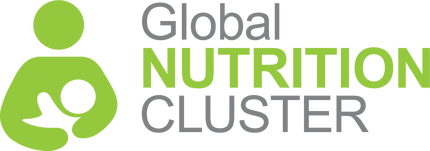Request support on coordination, information management, integration for nutrition outcomes or technical nutrition in emergencies assistance.
التماس الدعم لتنسيق التغذية وإدارة المعلومات والتغذية في حالات الطوارئ
Demander un appui pour la coordination de la nutrition, la gestion de l'information et la nutrition dans les situations d'urgence
Buscar apoyo para la coordinación de la nutrición, la gestión de la información y la nutrición en situaciones de emergencia
Solicite apoio para coordenação em nutrição, gestão de informação e nutrição em emergências
Mali
L1Coordination mechanism: Cluster
NCC: UNICEF P3, FT
Deputy: ACF
IMO: UNICEF NOB, TA
Coordination arrangement:
UNICEF Lead, MoPHP Co-lead and ACF Co-facilitator
Subnational level:
4 sub-national hubs in Gao (covering Kidal), Timbuktu (covering Taoudenit), Mopti (covering Segou, Bandiagara et Douentza) and Menaka.
Mid-Year Reporting 2024
January to June 2024
According to the IPC MNA, the nutritional situation in most of the districts in Mali is classified as “emergency” for 2024. Major contributing factors include the resurgence of armed conflicts, internal displacement, restrictions on humanitarian access, climate change, epidemics, low water availability, poor food consumption, and recurrent food insecurity. These factors have left 3.3 million people in need of urgent nutritional assistance, including 2.4 million children under 5 years old and 908,866 pregnant and lactating women.
Over the past decade, malnutrition has remained a significant concern in Mali, with considerable disparities based on age, gender, and regions. Among children under 5 years old, the prevalence of Global Acute Malnutrition (GAM), Moderate Acute Malnutrition (MAM), and Severe Acute Malnutrition (SAM) is 10.3%, 2.1%, and 25.4%, respectively. Additionally, children aged 6 to 23 months are most affected by GAM, with an average prevalence of 15.8%.
Furthermore, most internally displaced persons’ sites are classified as being in a state of nutritional emergency, with increasing prevalence of GAM among children and women, who constitute more than half of the internally displaced population. An analysis of needs has demonstrated severe nutritional severity (Phase 3 and above) in 48 administrative districts and the 6 communes of Bamako. The deterioration of the nutritional situation in these geographical areas is characterized by a combination of major factors, including armed conflict, internal displacement, restricted humanitarian access, climate change, epidemics, low water availability, poor food consumption, and recurrent food insecurity.
Scaling-up services for Management of Acute Malnutrition (CMAM) by using multiple approaches adapted to emergency and security challenges.
Building capacities of health workers and community health workers on the implementation of early detection and treatment of SAM and MAM, and other nutrition specific interventions at both health facility and community levels.
Promoting health and nutrition positive behavior at community level, including counselling on Infant and Young Child Feeding practices with the use of standardized IEC tools on key family practices.
Strengthening micronutrients supplementation strategies for Vitamin A (VAS), iron/folic acid, iodized salt, deworming.
Enhancing coordination and nutrition monitoring in hot spots areas to better inform programming and deploy rapid response.
Limited humanitarian access in certain areas requiring the establishment of mobile clinics.
High costs and difficulties in supplying nutritional inputs.
Low coverage of nutritional interventions.
Lack of funding.
| Advocacy Survey | |
| Country Advocacy Strategy developed | No |
| Link to document | |
| Advocacy activities included in annual work plan | Yes |
| Specific WG leading advocacy work established | Yes |
| Preparedness | |
| Contingency plan or ERP plan developed/updated | No |
| Link to document | |
| Intersectoral Collaboration (ISC) | |
| Intersectoral projects currently under implementation | Yes |
| Clusters engaged | |
| Food Security, Protection, Education, WASH and Health | |
Key Figures
(million)Funding
(million)- Children 6-59 months
- Pregnant and Lactating Women


